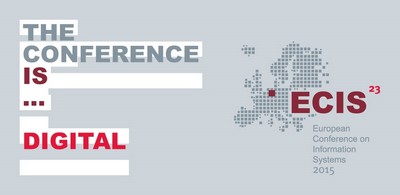DOI
10.18151/7217452
Abstract
Much existing research on IS and enterprise architecture focuses on suggesting different representa-tions describing a ‘target architecture’ for processes, information and information systems at different levels across the organization. Less emphasis has been put on the actual evolution of the current en-terprise architecture towards this envisioned ‘target architecture’. In this paper we look at enterprise architecture from a process perspective and explore how actual practices of architecting enfold and how they are mutually shaped by context. In doing so, we offer two contributions. First, we contribute empirically showing how enterprise architecting in practice is an ambidextrous activity focusing on both fixing the limitations of historically entrenched architectures and establishing new architecture by betting on what needs are going to give the most flexibility and value in the future. Secondly, we contribute by conceptualizing how enterprise architecture evolves over time, and propose the concepts of ‘architectural path-dependency’ and ‘enterprise architecting’. Architectural path-dependencies is the effect of existing architectures that become economically, technically and organizationally hard to change – at least in a radical manner. Enterprise architecting, on the other hand, is the intentional acts to circumvent path-dependencies and evolve towards an envisioned architecture. Henceforth, we argue that enterprise architecture transition is shaped by multiple architectural path-dependencies as well as various acts of enterprise architecting to establish new paths. The paper discusses theses con-cepts in relation to existing literature on software and enterprise architecture.
Recommended Citation
Rolland, Knut H.; Ghinea, Gheorghita; and Gronli, Tor-Morten, "Ambidextrous Enterprise Architecting: Betting on the Future and Hacking Path-dependencies" (2015). ECIS 2015 Completed Research Papers. Paper 150.
ISBN 978-3-00-050284-2
https://aisel.aisnet.org/ecis2015_cr/150


